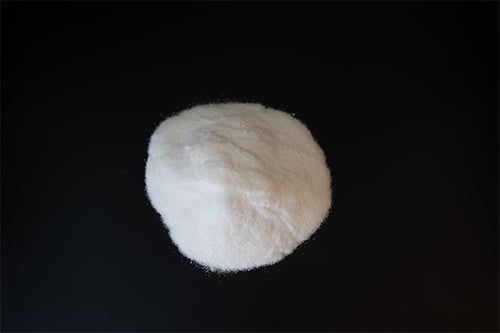Einführung
Welcome to our blog where we explore the fascinating world of sodium formate properties. Sodium formate is a compound with a multitude of unique characteristics and applications, making it an essential ingredient in various industries. In this introductory post, we’ll take a closer look at the properties of sodium formate and its significance in industrial processes, agricultural practices, and environmental applications. Join us as we uncover the versatility and importance of sodium formate properties in shaping modern-day technologies and innovations.
Natriumformiat verstehen

Sodium formate, chemically represented as NaHCOO (or sometimes as HCOONa), is a white crystalline solid at room temperature. It is a simple formate salt that is highly soluble in water and exhibits a relatively low melting point. The compound is synthesized through the reaction of carbon dioxide and sodium hydroxide.
Key Properties of Sodium Formate
The properties of sodium formate that make it so versatile include:
- Löslichkeit: Highly soluble in water, which facilitates its use in aqueous solutions.
- pH-Regulierung: Acts as a buffering agent, maintaining a stable pH level in various applications.
- Geringe Toxizität: Less toxic compared to other formate salts, making it safer for certain uses.
- Thermal Properties: Melts at a low temperature, which is useful in applications requiring phase change at lower heats.
Sodium Formate Properties and Applications in Industry
Sodium formate’s properties have found it a place in a wide array of industries:
- Textilindustrie: Used as a dye fixative and a buffering agent in the dyeing process.
- Metal Treatment: Functions as a rust remover and a descaler in metal cleaning processes.
- Food Industry: Employed as a preservative and a pH regulator in the food processing.
- Chemische Synthese: Utilized as an intermediate in the production of various chemicals and pharmaceuticals.
Sodium Formate in the Environment and Beyond
Sodium formate’s applications are not limited to industry; it also has a role in environmental management and other sectors:
- De-Icing: Effective as a de-icer due to its ability to lower the freezing point of water.
- Landwirtschaft: Used in the production of certain fertilizers and as a buffering agent in the soil.
- Leather Processing: Assists in the tanning process by acting as a preservative and pH regulator.
Safety and Handling of Sodium Formate
While sodium formate is considered less toxic, it is still important to handle it with care:
- Persönliche Schutzausrüstung (PSA): Use gloves and safety glasses when handling sodium formate.Avoid contact with skin and eyes, and do not inhale fumes. In case of accidental exposure, rinse affected area with water and seek medical attention immediately. Keep sodium formate stored in a cool, dry place away from incompatible materials.
- Lagerung: Store in a cool, dry place away from incompatible substances.Avoid exposure to direct sunlight and moisture. Keep container tightly closed when not in use. Follow all safety precautions and handling instructions provided.
- Entsorgung: Dispose of sodium formate according to local regulations and guidelines.It is important to handle and dispose of sodium formate properly to avoid any harm to the environment or human health. Contact your local waste management facility for specific instructions on how to safely dispose of this substance. Remember to always follow the regulations and guidelines set forth by your community to ensure proper disposal.
Table: Comparison of Sodium Formate with Other Common Formate Salts

| Property/Salt | Natriumformiat (NaHCOO) | Potassium Formate (KHCOO) | Calcium Formate (Ca(HCOO)2) |
|---|---|---|---|
| Solubility in Water | Highly Soluble | Highly Soluble | Soluble |
| pH Buffering Ability | Yes | Yes | Yes |
| Use in Textile Industry | Common | Less Common | Less Common |
| Use in Metal Treatment | Common | Less Common | Less Common |
| Toxicity Level | Niedrig | Mäßig | Mäßig |
| De-Icing Applications | Effective | Effective | Less Common |
Conclusion: Sodium Formate Properties
Sodium formate’s unique properties have positioned it as a valuable compound across various sectors, from industrial applications to environmental management. Its versatility in acting as a buffer, de-icer, and preservative, along with its low toxicity, makes it a preferred choice in many scenarios. As industries continue to innovate and new applications are discovered, the relevance and utility of sodium formate are likely to expand even further.
FAQ
Was ist Natriumformiat?
Sodium formate is a sodium salt derived from formic acid, used for its buffering, de-icing, and preservative properties in various industries.
What are the key properties of sodium formate?
Sodium formate is highly soluble in water, acts as a pH buffer, has low toxicity, and features thermal properties that make it melt at a low temperature.
In which industries is sodium formate commonly used?
It is used in the textile industry as a dye fixative, in the metal treatment industry for rust and scale removal, in the food industry as a preservative and pH regulator, and in agriculture and environmental management for de-icing and buffering.
How should sodium formate be stored and disposed of?
It should be stored in a cool, dry place away from incompatible substances and handled with proper PPE. Disposal should follow local regulations and guidelines.
Is sodium formate safe for the environment?
Sodium formate is considered less toxic than other formate salts, making it safer for environmental applications, but it should still be used and disposed of responsibly to minimize environmental impact.


